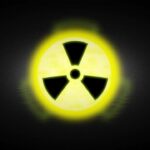Radioactive waste, a byproduct of nuclear energy production, medical treatments, and industrial applications, poses significant challenges due to its hazardous nature and enduring radioactivity. Ensuring its safe handling, treatment, and disposal is crucial for protecting human health and the environment. This article explores the strategies and technologies involved in managing radioactive waste, detailing the methods used for its treatment, the management practices in place, and the monitoring systems that ensure safety.
Understanding Radioactive Waste
Radioactive waste is any material that contains radioactive substances and is discarded as unwanted. It is categorized based on its level of radioactivity and the duration of its hazard:
Low-Level Waste (LLW): Contains low concentrations of radioactive isotopes and is typically generated from routine operations in hospitals, research laboratories, and nuclear facilities. Common examples include contaminated clothing, gloves, and medical waste.
Intermediate-Level Waste (ILW): Exhibits higher levels of radioactivity and requires shielding during handling and storage. This category includes reactor components, spent resins, and chemical sludges.
High-Level Waste (HLW): Highly radioactive and generates significant heat. HLW primarily consists of spent nuclear fuel and waste from reprocessing operations. It requires robust shielding and long-term management solutions due to its high radioactivity and heat generation.
Treatment of Radioactive Waste
The treatment of radioactive waste aims to reduce its volume and radioactivity, making it safer for handling and disposal. Key treatment technologies include:
Chemical Treatment: Techniques such as ion exchange, solvent extraction, and precipitation are used to separate and concentrate radioactive isotopes. These methods reduce the volume of liquid waste and facilitate its solidification.
Physical Treatment: Methods like filtration, centrifugation, and evaporation concentrate radioactive materials, which simplifies their management. For instance, evaporation reduces the volume of liquid waste by removing water.
Thermal Treatment: Incineration and pyrolysis are employed for certain types of radioactive waste, particularly low-level waste. These processes reduce waste volume and can sometimes transform the waste into more manageable forms.
Solidification: Converting radioactive waste into solid forms helps in easier handling and disposal. Techniques such as cementation, vitrification (immobilization in glass), and bituminization (immobilization in bitumen) are commonly used to solidify waste, reducing its mobility and ensuring stability.
Management of Radioactive Waste
Effective management of radioactive waste involves safe handling, storage, and disposal to minimize risks to human health and the environment. Key aspects include:
Storage:
Interim Storage: Involves temporary storage in specially designed facilities that provide adequate shielding and containment. Spent nuclear fuel, for example, is often stored in cooling pools or dry casks to manage its heat and radioactivity.
Long-Term Storage: High-level waste and spent nuclear fuel require long-term storage solutions, often involving geological disposal in deep geological formations. This method aims to isolate the waste from the environment for thousands of years.
Disposal:
Deep Geological Disposal: This method involves placing waste in stable geological formations deep underground. It is considered a permanent solution, offering long-term isolation and containment to prevent radiation from reaching the surface.
Near-Surface Disposal: Used for low-level waste, this approach involves burying waste in shallow landfills. While it provides a more accessible solution, it requires continuous monitoring to ensure that the containment remains effective.
Regulation and Policy: The management of radioactive waste is governed by national and international regulations. Agencies like the International Atomic Energy Agency (IAEA) provide guidelines and standards to ensure safe practices. Regulatory frameworks include safety assessments, waste characterization, and licensing requirements to ensure compliance and safety.
Monitoring of Radioactive Waste
Monitoring is essential to ensure the safety and effectiveness of radioactive waste management practices. Key monitoring activities include:
Radiation Monitoring: Instruments such as dosimeters, radiation detectors, and monitoring stations measure radiation levels around waste storage and disposal sites. Continuous monitoring helps detect any leakage or unexpected changes in radiation levels.
Environmental Monitoring: Regular sampling and analysis of soil, water, and air around waste management sites assess the impact of potential radioactive releases. This helps ensure that environmental standards are maintained and that any contamination is addressed promptly.
Waste Tracking and Record-Keeping: Comprehensive tracking systems and databases maintain records of waste generation, treatment, storage, and disposal. Accurate documentation ensures accountability and facilitates regulatory compliance.
Safety Inspections: Routine inspections of storage and disposal facilities ensure that safety measures are adhered to and that equipment is functioning correctly. These inspections help identify potential issues and ensure that corrective actions are taken as needed.
Challenges and Future Directions
The management of radioactive waste presents ongoing challenges, including:
Public Acceptance: Building public trust and acceptance for waste management and disposal facilities is crucial. Effective communication and community engagement are essential to address concerns and garner support.
Technological Advancements: Continued research and development of new technologies for waste treatment, storage, and disposal are necessary to improve safety and efficiency. Innovations such as advanced separation technologies and new containment materials may enhance waste management practices.
Long-Term Stewardship: Ensuring the long-term safety and security of radioactive waste requires sustained efforts and resources. This includes ongoing monitoring, maintenance, and adapting management strategies to address evolving challenges.
Conclusion
The treatment, management, and monitoring of radioactive waste are critical for ensuring environmental protection and public safety. Through advanced treatment technologies, robust management practices, and diligent monitoring, the risks associated with radioactive waste can be effectively mitigated. As technology advances and new challenges arise, continued innovation and adherence to stringent safety standards will be key to addressing the complexities of radioactive waste management and securing a safe future for generations to come.



